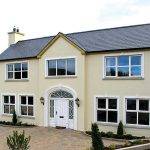With environmental concerns and the increase in cost of energy, creative lighting must be achieved in an energy efficient way and comply with currently building regulations. The old inefficient tungsten bulb favoured for its softer glow is no more. In its place are energy saver LED and fluorescent bulbs. These emit a cooler, white light which can be dimmed, but this alone will not soften it. Personally, I’m still lamenting the loss of the 40 Watt soft glow bulb despite claims that energy efficient bulbs can emit the same quality of light. That said, it is true that the situation is improving year on year with some very attractive new eco-friendly bulbs becoming available.
[powerkit_collapsibles]
[powerkit_collapsible title=”TopTips” opened=”true”]
- Variety is as important as choosing the texture and colour for a room
- Always allow for changes in mood and light 3 The more sockets and widely distributed in a room, the better
- Control is crucial – always consider the use of dimmers. Check that your intended lights are designed for dimming (fluorescents and LEDs may not)
- Use three or four circuits in a room on dimmer controls
- If your design allows, put all lamp sockets on a 5amp lighting circuit to be controlled by the door
- Think of using lamps and plan some floor sockets. However use floor sockets sparingly; if located in the wrong place they can become a trip hazard! 3 Use uplighting to define textures and highlight features
- Before embarking on your design check out the work of lighting professionals such as John Cullen and Kelly Hoppen, or visit local designers to view their completed projects
[/powerkit_collapsible]
[powerkit_collapsible title=”Bulb Guide”]
Quick guide to the humble bulb:
Original 40 watt bulb 400-500 lumens
Original 60 watt bulb 650-900 lumens
Original 100 watt bulb 1000-1750 lumens
Original 150 watt bulb 1800-2780 lumen
[/powerkit_collapsible]
[/powerkit_collapsibles]
Variety is the spice of light
Should your plans be modest or more dramatic, variety is important. Professional lighting designers are rather fond of ‘layering’ within a lighting design scheme, which is a rather fanciful way of saying you need a variety of lights in every room, i.e. a mix of ceiling and lamp lighting.
The most commonly used form of light to create a pleasant evening welcome is a free standing lamp, should that be a table or floor lamps, recently fashionable once again. If you don’t have the luxury of a fully planned electrical lighting plan it’s the best way of achieving a more dramatic, contrasting lighting scheme.
I would suggest that each room in the home would benefit from at least three lamps in various positions and at different heights. They provide localised pools of light and a soft background. With freestanding lamps, the choice of shade is critical in determining the end result; a fabric shade gives diffused soft light, a solid dark shade directs light above and below. If lamp light is your main source of illumination, stick with a more translucent shade.
Hallways
Halls, corridors and landings are generally last to be considered and consequently often are left with a bare bulb or bleak looking lampshade. They are tricky to tackle as their proportions are often compromised, but on the plus side, are actually a great area to play around with lighting.
A row of central recessed spotlights is best avoided and as with other larger spaces, variety is all important. Use a mix of low level floor washer, wall lights, table lamps and perhaps the odd spot to access an object. Of course in an existing house, in-wall or in-floor lights will be very expensive due to the building works required to accommodate them, so will only really be an option in a new build.
You can also create some interest and excitement with a large pendant or chandelier with a dimmer, but combine this with other sources of light. In hallways that are more akin to corridors, spotlights may be an alternative to a central pendant, which could easily look clumsy. Work with the shape of the space.







